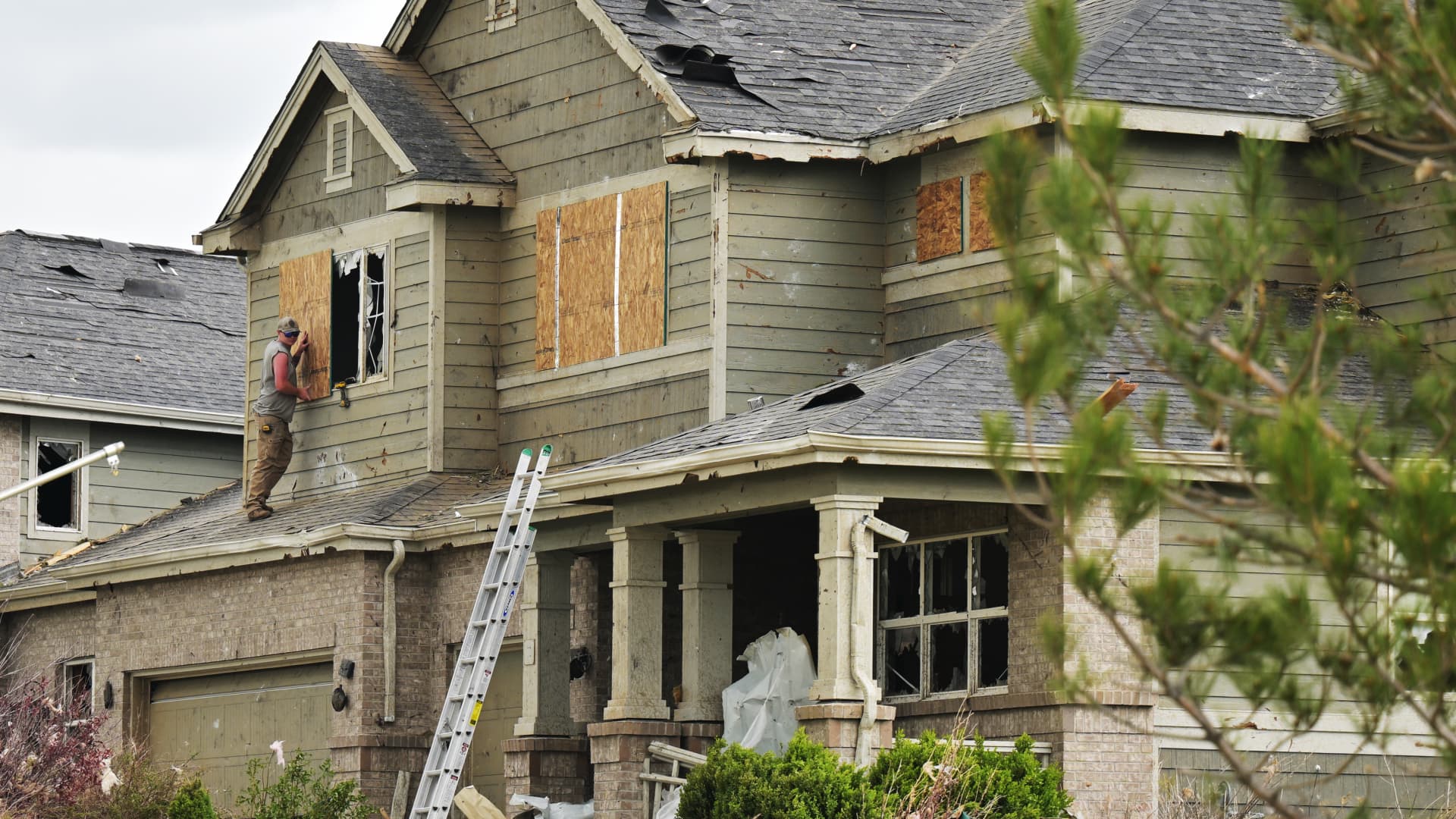A worker helps board up windows at Joey and Brenda Bermudez’s home that was damage by a recent tornado at the Elkhorn Ranch neighborhood in Elbert County on May 19, 2025.
RJ Sangosti | MediaNews Group | Denver Post | Getty Images
Global insured losses for the first half of this year have reached $84 billion, according to a recent Gallagher Re report — the highest first half total since 2011.
Violent storms in the U.S. with damaging wind, lightning and hail are driving losses for insurers of more than $30 billion, according to the report from the global reinsurance broker. These severe convective storms make up 39% of the insured losses globally in the first half of 2025.
The damage is expensive. In the U.S., 11 different storms produced insured losses of at least a billion dollars — and three of those storms cost insurers more than $2 billion.
A historic storm outbreak from March 13 to March 16 spawned at least 118 tornado touchdowns across 15 states and resulted in 43 fatalities. Claims are still being processed, but Gallagher Re said it expects insured losses to approach $7.7 billion, making it the fourth costliest single severe convective storm event in modern history.
Gallagher Re said 2025 is on a clear path to surpassing $100 billion in insurance losses for the full year, calling the threshold “a new market reality.”
Insurers have to deal with a variety of weather-related concerns. Hail is a huge problem, the report noted — more frequent storms that produce damaging hail are driving large losses for insurers.
Meanwhile, the Palisades and Eaton wildfires in Southern California in January are responsible for an estimated $40 billion in insured losses, the costliest individual wildfire events ever recorded for insurers and reinsurers.
Soaring housing costs are also fueling the the significant growth in insured losses. Higher prices associated with materials and labor mean insurers pay more to repair or replace homes, buildings and vehicles. And people continue to choose locations that are vulnerable to severe weather or fire.



